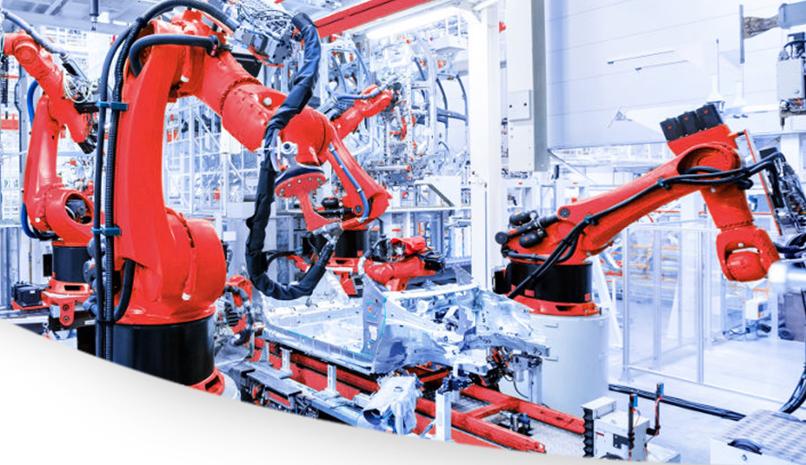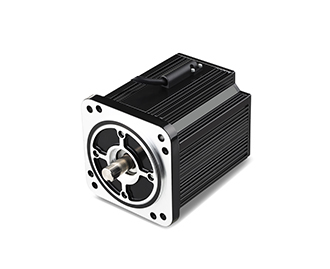What Are Different Types of Motors Used in Robots?
The rapid development of robotic technology has revolutionized industries like manufacturing, healthcare, logistics, and agriculture. As robots become more sophisticated and integrated into various operations, the importance of reliable, efficient, and precise motors becomes evident.
Motors used in robots are essential, as they drive the movement and enable the robot to perform tasks with accuracy and efficiency. In this article, Power Motor will explore different motors used in robots and discuss important considerations when selecting motors for robotic systems.

Types of Motors Used in Robots
l Brushed DC Motor
The brushed DC motor operates using brushes that make physical contact with the commutator, creating electrical contact to drive the motor's rotation. With several variations, the permanent magnet DC motor (PMDC) is widely applied in robotics. They are common in robotic systems, such as those in toys, due to their ease of control and low cost. However, they require maintenance from time to time because of the wear of brushes.
l Brushless DC Motor (BLDC)
Brushless DC motors are an improvement over their brushed counterparts. They eliminate the need for brushes by using electronic controllers to manage the motor's operation. This design enhances reliability, reduces maintenance, and improves efficiency. All these highlights contribute to their wide applications in modern robotics, such as drones, medical robots, and packaging machinery.

Product shown: Industrial Automation Brushless Motor
l Geared DC Motor
A geared DC motor incorporates a set of gears with a traditional DC motor. This gear system helps increase the motor's torque while reducing its speed, making it ideal for applications requiring higher power at lower speeds.
They can come in different types, including right-angle geared motors, inline geared motors, and planetary gear motors. Generally, you can see them in robotics like robot drive trains, packaging machinery, and conveyor systems.
l AC Motor
In general, AC motors are selected for applications where constant speed is required. Additionally, they are often utilized for large mobile robots and robotic systems that require high power output (like heavy-duty cranes). Compared to DC motors, they can be more complex to control and need an external power inverter to change the motor speed.
l Servo Motor
Servo motors are specialized motors used in precise positioning applications. They typically have a feedback system, ensuring they reach the desired position with minimal error. This makes them perfect for robotics that perform high-accuracy tasks, such as robotic arms and autonomous vehicles. For applications that demand the motor's continuous rotation, servo motors are not the first choice.
l Stepper Motor
Stepper motors move in discrete steps. They are ideal for applications where precise position control is required without the use of feedback systems. For instance, stepper motors are often used in robots for tasks like 3D printing or CNC machining, where precision and repeatability are essential. However, they may be sensitive to loads, and their accuracy may decrease at high speeds.
l Linear Motor
Linear motors provide direct linear motion, as opposed to rotational motion, like traditional motors. These motors are used in robots that require straight-line movement, such as pick-and-place machines or linear actuators. They offer high speed and precision, making them essential for tasks that involve moving objects along a specific path or trajectory.
How to Choose the Right Motors for Robotics
Due to their respective unique features, you will need careful consideration for choosing motors used in robots. Generally, there are the following considerations:
1. Torque and Speed
It depends on the tasks the robotic system needs to perform. For example, high-torque motors are needed for lifting heavy objects, while high-speed motors are necessary for tasks requiring fast movement.
2. Power and Efficiency
The motor's power requirements should match the robot's overall power needs. Additionally, energy-efficient motors will help maximize the robot's battery life and energy consumption.
3. Size and Weight
In robotic systems, space and weight are often limited. It is important to select a motor that provides the required power while remaining compact and lightweight, especially for mobile robots or drones.
4. Control Interface
The motor must be compatible with the robot's control system. Easy, responsive, and precise control is helpful in ensuring the system's smooth operation. There may be components like sensors and feedback systems.
5. Durability and Reliability
Often, robotic systems operate in demanding environments, particularly robots used in industrial or outdoor applications. Therefore, it is important that the robotic motor is built with reliable and robust materials and structure.
6. Noise Level
Noise can be a concern for certain applications; for instance, robots applied in healthcare or domestic environments need quieter motors to avoid disturbance.
7. Cost
Cost is always a factor in any manufacturing process. While high-quality and leading motors may be more expensive, they ensure long-term reliability and save more due to fewer maintenance needs.
Power Motor stands out in the motor industry and offers high-performance motors used in robots. For instance, you can find industrial robot arm motors that offer high torque, high durability, and low noise here. In addition to the current product list, we also provide OEM&ODM services, allowing our clients to have customized motors for their sophisticated robotic systems.
Conclusion
The performance of a robot heavily depends on the motor technology it utilizes. Understanding the different types of motors used in robotics can help you choose the right one for optimal performance.
If you have further doubts about motors used in robots, you are more than welcome to contact Power Motor to have tailored suggestions. We have 20+ years of experience in different motors like BLDC motors and geared motors. You can rely on our motor expertise to have the best solution!
